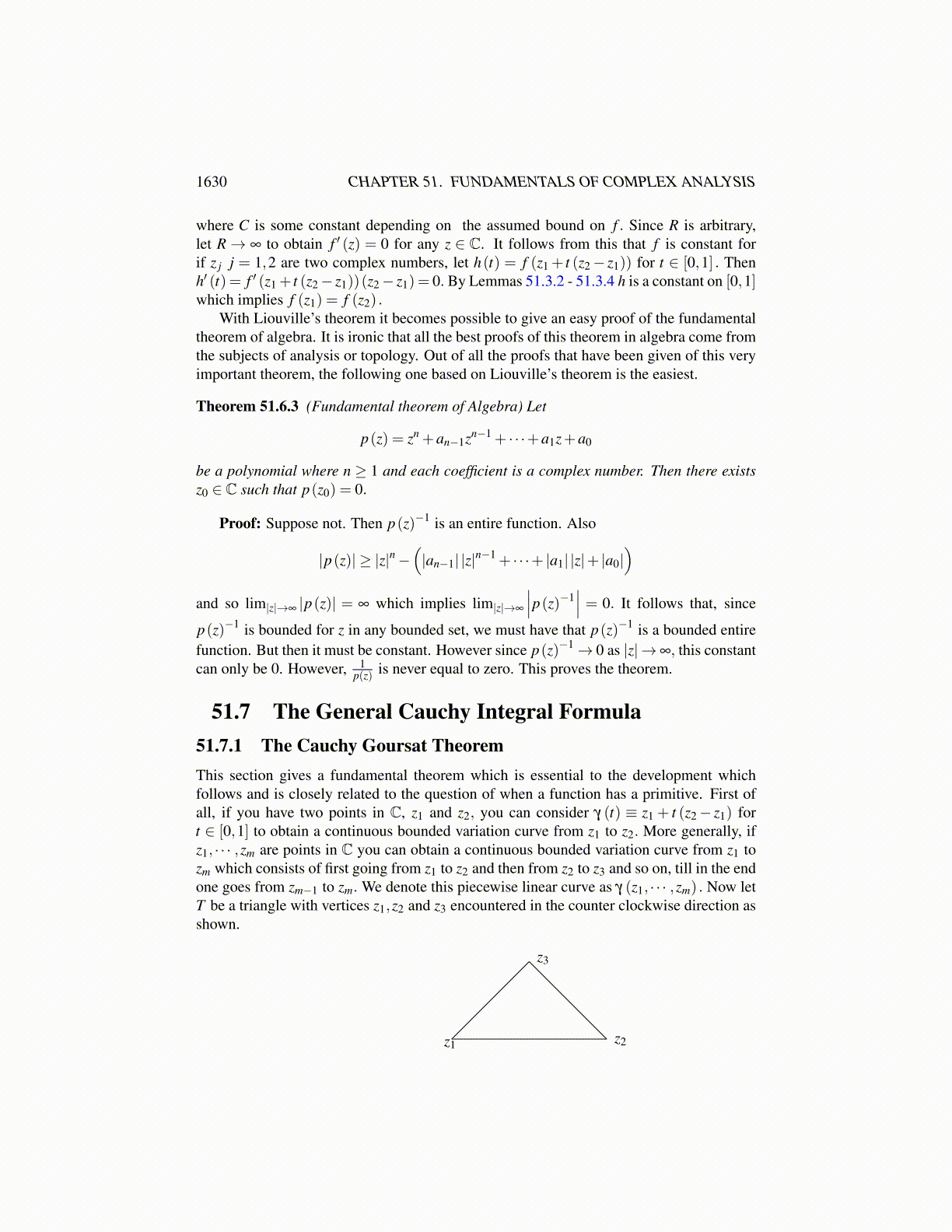
1630 CHAPTER 51. FUNDAMENTALS OF COMPLEX ANALYSIS
Definition 51.5.2 Suppose f is an analytic function defined near a point, α where f (α) =0. Thus α is a zero of the function, f . The zero is of order m if f (z) = (z−α)m g(z) whereg is an analytic function which is not equal to zero at α.
Theorem 51.5.3 Let Ω be a connected open set (region) and let f : Ω→ X be analytic.Then the following are equivalent.
1. f (z) = 0 for all z ∈Ω
2. There exists z0 ∈Ω such that f (n) (z0) = 0 for all n.
3. There exists z0 ∈Ω which is a limit point of the set,
Z ≡ {z ∈Ω : f (z) = 0} .
Proof: It is clear the first condition implies the second two. Suppose the third holds.Then for z near z0
f (z) =∞
∑n=k
f (n) (z0)
n!(z− z0)
n
where k ≥ 1 since z0 is a zero of f . Suppose k < ∞. Then,
f (z) = (z− z0)k g(z)
where g(z0) ̸= 0. Letting zn→ z0 where zn ∈ Z,zn ̸= z0, it follows
0 = (zn− z0)k g(zn)
which implies g(zn) = 0. Then by continuity of g, we see that g(z0) = 0 also, contrary tothe choice of k. Therefore, k cannot be less than ∞ and so z0 is a point satisfying the secondcondition.
Now suppose the second condition and let
S≡{
z ∈Ω : f (n) (z) = 0 for all n}.
It is clear that S is a closed set which by assumption is nonempty. However, this set is alsoopen. To see this, let z ∈ S. Then for all w close enough to z,
f (w) =∞
∑k=0
f (k) (z)k!
(w− z)k = 0.
Thus f is identically equal to zero near z ∈ S. Therefore, all points near z are containedin S also, showing that S is an open set. Now Ω = S∪ (Ω\S) , the union of two disjointopen sets, S being nonempty. It follows the other open set, Ω \ S, must be empty becauseΩ is connected. Therefore, the first condition is verified. This proves the theorem. (See thefollowing diagram.)
1.)↙↗ ↘
2.) ←− 3.)